Data Governance for Small Businesses: Where to Begin?
Data governance is the practice of managing your data as a valuable asset. It ensures your information remains accurate, secure, and compliant with regulations. For small businesses, this is not just a luxury—it’s a necessity. Effective data governance improves decision-making, enhances efficiency, and builds trust with customers. Starting doesn’t have to feel overwhelming. By focusing on the core ingredients of data governance—people, processes, and tools—you can take small, manageable steps toward better data management and long-term success.
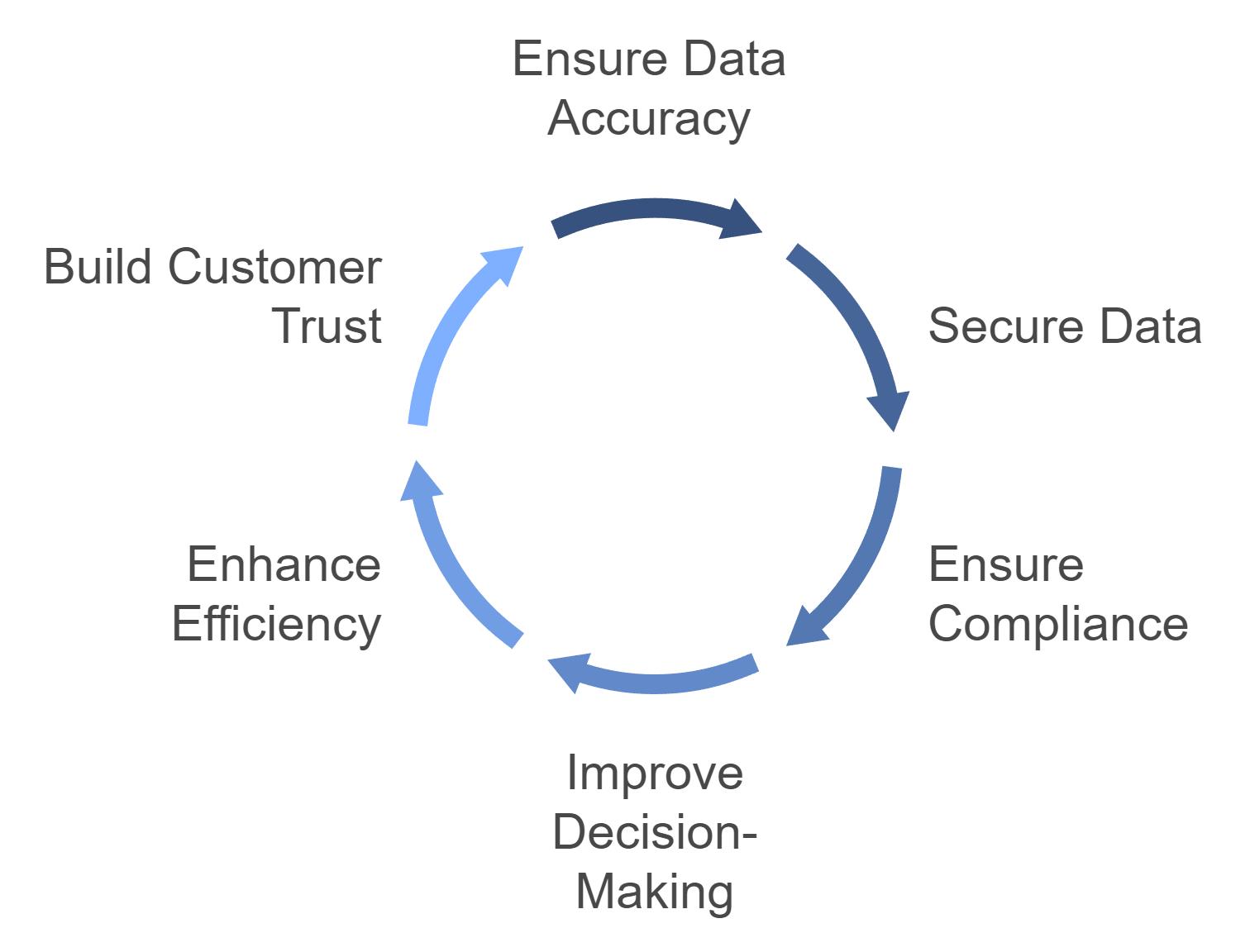
Key Takeaways
Data governance is essential for small businesses to manage data as a valuable asset, ensuring accuracy, security, and compliance.
Implementing data governance improves decision-making by providing reliable data, which helps identify trends and growth opportunities.
Protect sensitive information through clear protocols and access controls to build customer trust and safeguard your reputation.
Start small by categorizing your data and assigning roles, then gradually scale your data governance efforts as your business grows.
Choose affordable tools that simplify data management, ensuring they align with your specific needs for security and compliance.
Regularly review and update your data governance plan to adapt to changes in your business and industry, ensuring long-term effectiveness.
Engage your team in the data governance process to gather feedback and foster a culture of continuous learning and improvement.
What Is Data Governance?
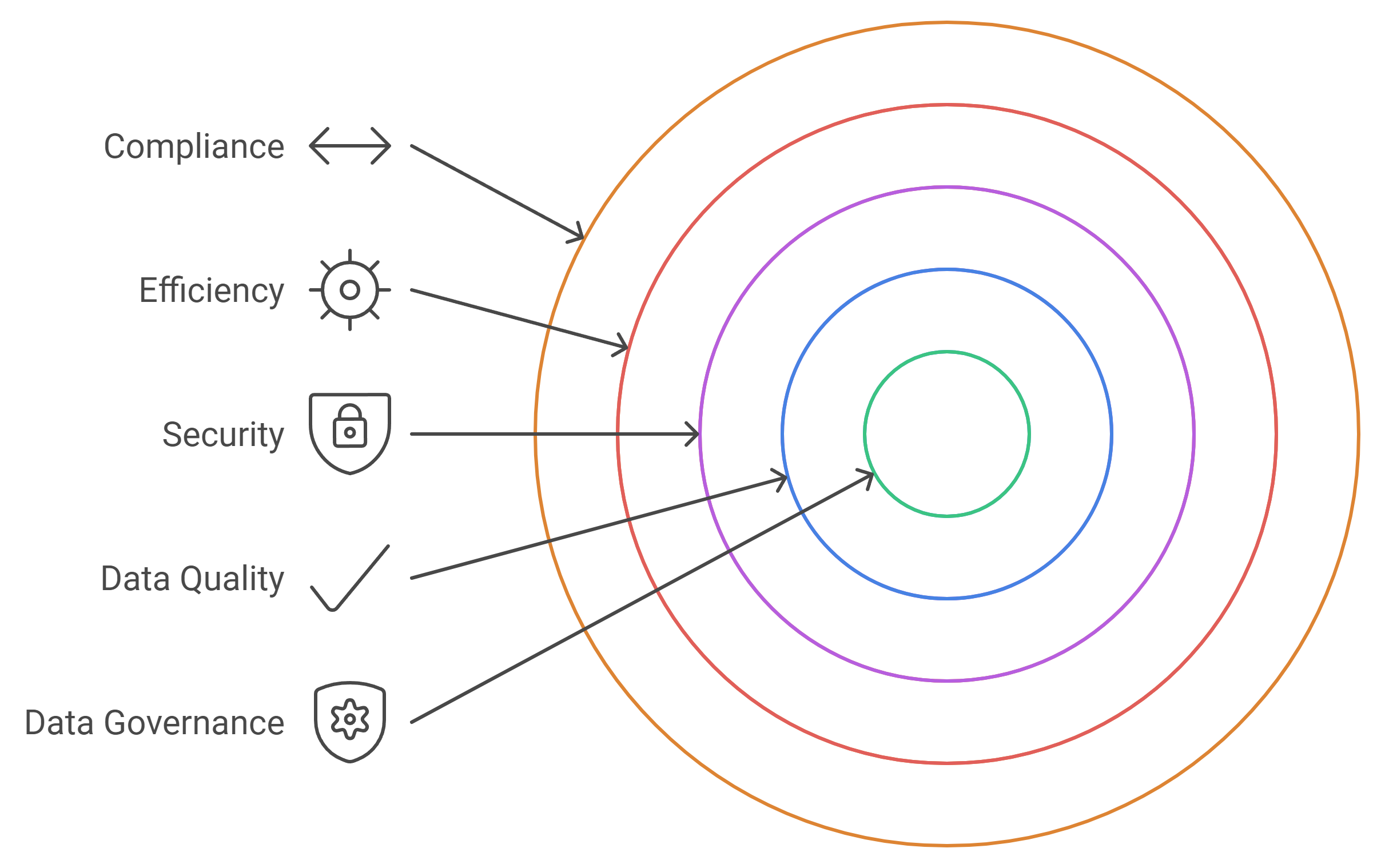
A Simple Definition for Small Businesses
Data governance refers to the process of managing your data to ensure it remains accurate, secure, and reliable. For small businesses, this means creating a framework that organizes how you collect, store, and use information. It’s not about adding complexity to your operations. Instead, it’s about making sure your data works for you, not against you.
Think of data governance as a set of rules and practices that help you treat your data as a valuable resource. By implementing these practices, you can ensure that your data stays consistent and trustworthy. This consistency allows you to make informed decisions and avoid costly mistakes. For example, when your customer data is well-organized, you can tailor your marketing efforts more effectively, leading to better results.
Why Data Governance Is a Cornerstone for Success
Data governance plays a critical role in the success of any small business. It helps you maintain data quality by setting clear standards for how information is handled. These standards ensure that your data remains accurate and up-to-date, which is essential for making sound business decisions.
“Good data governance enhances security, privacy compliance, and operational efficiency.”
By prioritizing data governance, you also protect sensitive information from breaches. This protection builds trust with your customers, showing them that you value their privacy. Trust is a key factor in retaining customers and growing your business.
Additionally, data governance improves efficiency. When your data is well-organized, your team spends less time searching for information and more time focusing on tasks that drive growth. It also ensures compliance with regulations, reducing the risk of legal issues that could harm your business.
In short, data governance is not just a technical process. It’s a strategic approach that supports your business goals, safeguards your reputation, and sets the foundation for long-term success.
Why Data Governance Matters for Small Businesses
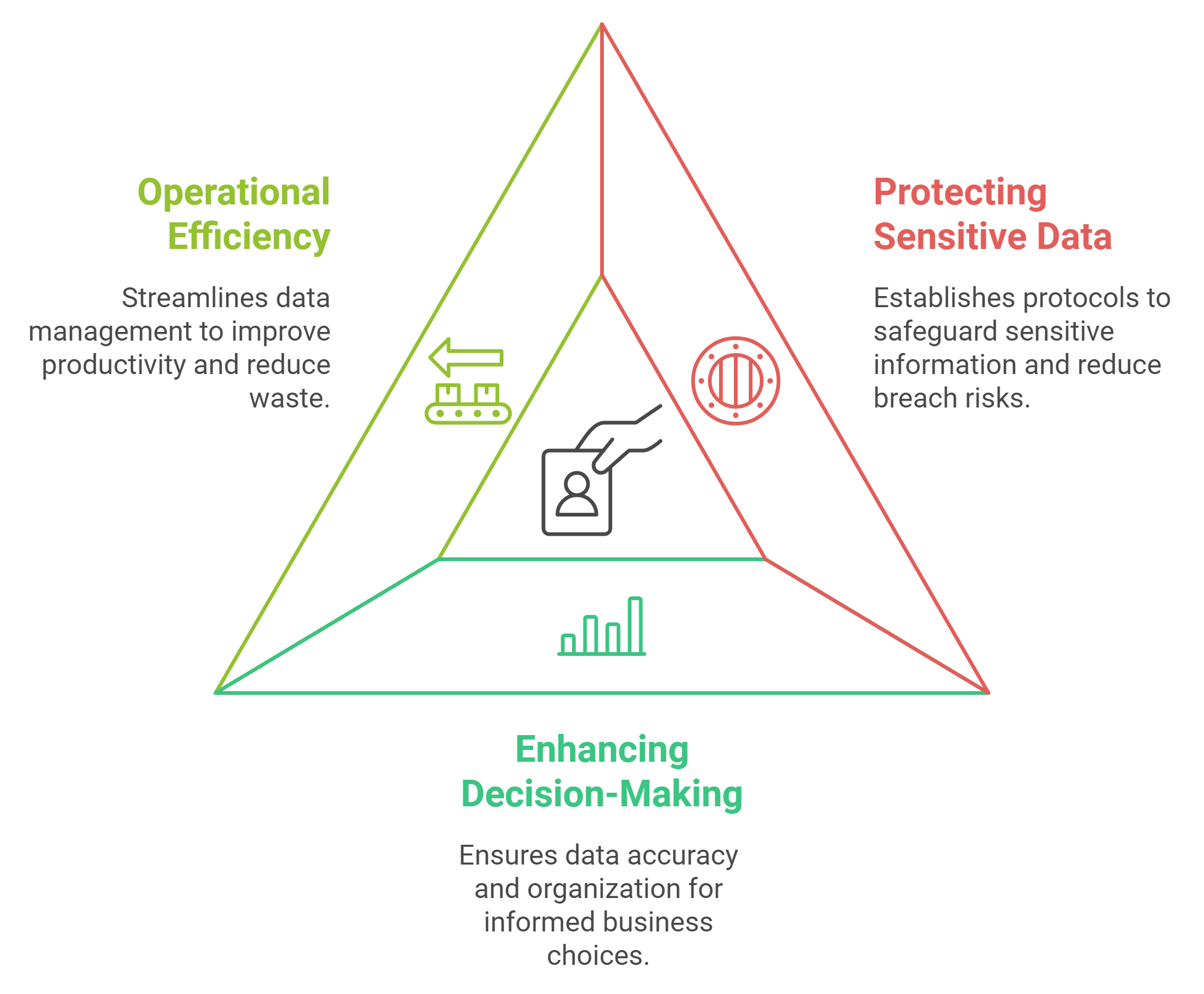
Protecting Sensitive Data
Your business handles sensitive information daily. This could include customer details, financial records, or employee data. Without proper safeguards, this data becomes vulnerable to breaches. A single breach can damage your reputation and erode customer trust. Data governance helps you establish clear protocols to protect this information. It ensures that only authorized individuals access sensitive data, reducing the risk of misuse.
Small businesses often believe they are not targets for cyberattacks. However, attackers frequently target smaller companies due to weaker security measures. By implementing data governance, you create a structured approach to data security. This includes encrypting files, setting up access controls, and regularly updating your systems. These steps demonstrate your commitment to safeguarding information, which builds confidence among your customers.
“Data governance is not just about compliance; it’s about protecting what matters most—your business and your customers.”
Enhancing Decision-Making and Efficiency
Accurate data drives better decisions. When your data is well-organized and reliable, you can analyze trends, understand customer behavior, and identify growth opportunities. Data governance ensures that your data remains consistent and up-to-date, enabling you to make informed choices. For example, tracking sales data accurately helps you adjust your marketing strategies to maximize revenue.
Operational efficiency also improves with effective data governance. Searching for misplaced files or correcting errors wastes valuable time. A structured data management system eliminates these inefficiencies. Your team can access the information they need quickly, allowing them to focus on tasks that contribute to your business goals.
Historically, data governance was a concern for large corporations. Today, it has become essential for small businesses as well. The digital age demands that even startups manage their data effectively. By adopting data governance practices, you position your business for long-term success.
The Risks of Ignoring Data Governance
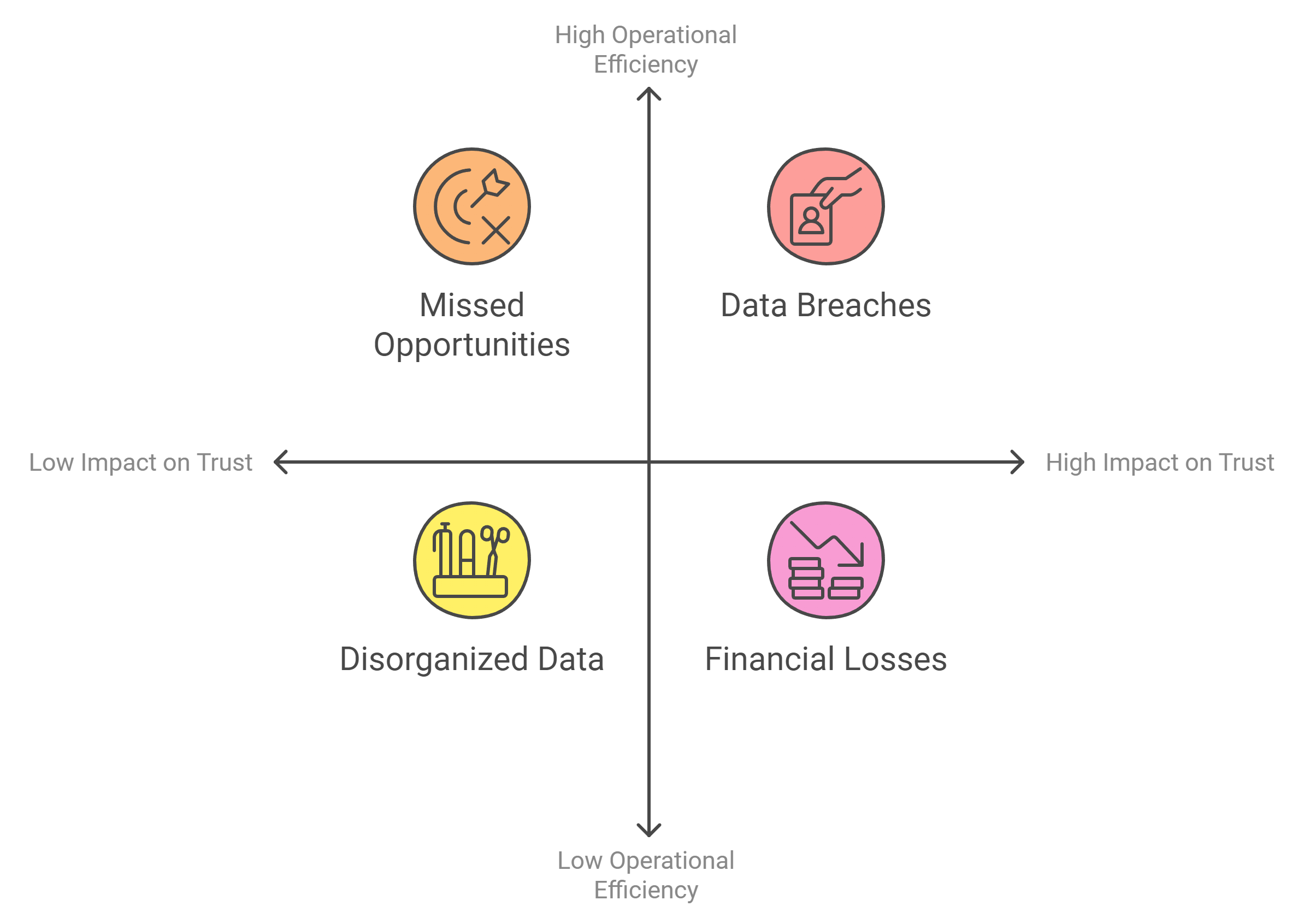
Data Breaches and Loss of Trust
Failing to manage your data effectively exposes your business to significant risks. One of the most alarming consequences is the potential for data breaches. Cybercriminals often target small businesses, assuming their security measures are weaker. A single breach can compromise sensitive customer or employee information, leading to severe financial and reputational damage. According to recent findings, small businesses have faced financial losses exceeding $500,000 due to cyber incidents. For many, this level of loss can be devastating.
Beyond financial harm, a breach erodes the trust your customers place in your business. Trust is fragile, and once lost, it can take years to rebuild. Customers expect you to protect their personal information. When you fail to do so, they may take their business elsewhere. Even large corporations like Facebook have faced massive fines—such as the $1.3 billion penalty for GDPR violations—highlighting the importance of robust data practices. For small businesses, the stakes are even higher, as the margin for error is smaller.
Implementing strong data governance practices helps you safeguard sensitive information. Encryption, secure password policies, and access controls are essential tools in this effort. These measures not only protect your data but also demonstrate your commitment to security, which strengthens customer confidence.
“Data breaches are not just technical failures; they are trust failures.”
Operational Inefficiencies and Missed Opportunities
Ignoring data governance also creates inefficiencies that hinder your business operations. Disorganized data leads to wasted time as employees search for misplaced files or correct errors. This inefficiency reduces productivity and diverts attention from tasks that drive growth. Without a structured approach to managing your data, your team may struggle to access the information they need when they need it.
Missed opportunities are another consequence of poor data management. Inaccurate or outdated data can lead to flawed decision-making. For example, if your sales data is unreliable, you might misallocate resources or miss trends that could boost revenue. Data governance ensures that your information remains accurate and up-to-date, enabling you to make informed decisions that align with your business goals.
Operational inefficiencies and missed opportunities can cost your business more than just time. They can also impact your bottom line. By prioritizing data governance, you create a streamlined system that supports efficiency and growth. This proactive approach positions your business to seize opportunities and avoid costly mistakes.
“Efficient data management is not a luxury; it is a necessity for staying competitive.”
Key Steps to Start Data Governance
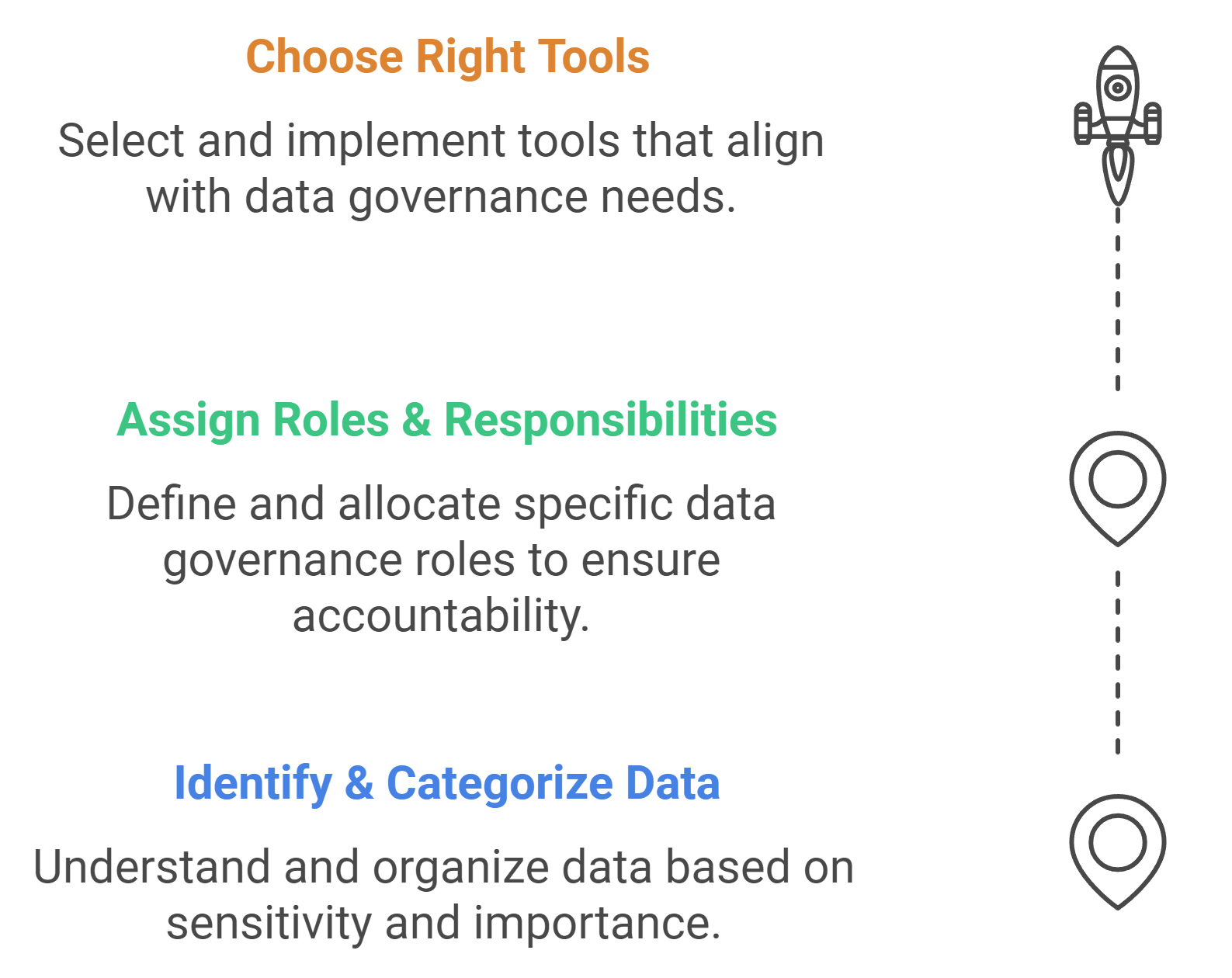
Identify and Categorize Your Data
The first step in establishing data governance is understanding the data your business handles. Begin by identifying all the types of data you collect, such as customer information, financial records, or employee details. Once identified, categorize this data based on its sensitivity and importance. For example, customer payment details should fall under a high-sensitivity category, while general marketing data may require less stringent controls.
Categorizing your data allows you to prioritize its management. Sensitive data demands stronger security measures, including encryption and restricted access. On the other hand, less critical data can follow simpler protocols. This structured approach ensures that your efforts focus on protecting what matters most.
“Data categorization is the foundation of effective data governance. It helps you allocate resources efficiently and safeguard sensitive information.”
By organizing your data into clear categories, you also make it easier to comply with regulations. Many laws, such as GDPR or CCPA, require businesses to handle personal data responsibly. Proper categorization simplifies compliance and reduces the risk of penalties.
Assign Data Governance Roles and Responsibilities
Data governance thrives on accountability. Assigning clear roles and responsibilities ensures that every aspect of your data management has an owner. Start by identifying key individuals within your team who can oversee specific areas of data governance. For instance, a data steward can monitor data quality, while an IT manager can handle security protocols.
Define each role with precision. A data steward might ensure that customer records remain accurate and up-to-date, while a compliance officer ensures adherence to legal requirements. Clear definitions prevent confusion and ensure that tasks are completed efficiently.
“Accountability is the backbone of data governance. Without it, even the best plans can falter.”
Small businesses often operate with limited resources, so team members may need to wear multiple hats. In such cases, prioritize roles that address your most pressing data governance needs. Regularly review these responsibilities to adapt to changes in your business or regulatory environment.
Choose the Right Tools for Data Management
The right tools can simplify your data governance journey. Data governance tools provide a centralized platform to manage, monitor, and secure your data. These tools help enforce policies, track data usage, and ensure compliance with regulations. For small businesses, affordable options like open-source tools or cloud-based solutions can offer robust features without straining your budget.
Look for tools that align with your specific needs. For example, if your primary concern is data security, choose a tool that offers encryption and access controls. If compliance is a priority, select a solution that includes audit trails and reporting features. Tools like Informatica provide comprehensive solutions, including data lineage, quality checks, and policy enforcement.
“Investing in the right tools saves time and reduces errors, allowing you to focus on growing your business.”
Before committing to a tool, test its usability. A complex system can overwhelm your team and hinder adoption. Opt for user-friendly solutions that integrate seamlessly with your existing processes. Training your team on these tools ensures they use them effectively, maximizing their value.
Best Practices for Implementing Data Governance
Focus on People, Processes, and Tools
Effective data governance begins with a focus on three core elements: people, processes, and tools. Each plays a vital role in ensuring your data management efforts succeed.
Start by involving your team. Assign clear responsibilities to individuals who will oversee data quality, security, and compliance. This approach fosters accountability and ensures that every aspect of your data governance plan has a dedicated owner. Collaboration across departments is essential. When everyone works together under shared standards, your business can break down silos and create a unified approach to managing data.
Processes come next. Establish clear guidelines for how your business collects, stores, and uses data. These guidelines should align with your business goals and regulatory requirements. For example, you might create a process for verifying customer information to maintain accuracy. Consistent processes reduce errors and improve efficiency.
Finally, choose tools that support your data governance efforts. Look for solutions that simplify tasks like tracking data usage, enforcing policies, and ensuring compliance. Affordable options, such as cloud-based platforms, can provide robust features without straining your budget. The right tools save time and help your team stay organized.
“Data governance thrives when people, processes, and tools work together seamlessly.”
Start Small and Scale Gradually
Starting small is the key to avoiding overwhelm. Instead of trying to implement a comprehensive data governance plan all at once, focus on one area of improvement. For instance, you could begin by organizing customer data or setting up access controls for sensitive information. Small, manageable steps allow you to build momentum and gain confidence.
As your business grows, scale your efforts gradually. Expand your data governance practices to include other areas, such as financial records or employee data. Regularly assess your progress and identify new opportunities for improvement. This incremental approach ensures that your data governance plan evolves alongside your business.
“Think big, but start small.” This mindset helps you manage the process effectively while laying a strong foundation for future success.
Regularly Review and Update Your Data Governance Plan
Data governance is not a one-time effort. Regular reviews are essential to ensure your plan remains effective and relevant. Schedule periodic assessments to evaluate your data management practices. During these reviews, identify any gaps or areas for improvement.
Update your plan to reflect changes in your business or industry. For example, new regulations may require adjustments to your data handling processes. Similarly, as your business adopts new technologies, you may need to revise your tools and strategies.
Engage your team in this process. Gather feedback from employees who interact with data daily. Their insights can help you identify practical solutions and refine your approach. By keeping your data governance plan up-to-date, you ensure it continues to support your business goals and protect your valuable information.
“A dynamic data governance plan adapts to change, ensuring long-term success.”
Overcoming Common Challenges in Data Governance
Managing Limited Resources and Budget
Small businesses often face constraints when it comes to resources and budget. These limitations can make data governance seem like an unattainable goal. However, you can overcome these challenges by adopting a strategic approach that maximizes efficiency without overspending.
Start by prioritizing your efforts. Focus on the most critical aspects of data governance, such as securing sensitive information and ensuring compliance with regulations. This targeted approach allows you to allocate your limited resources effectively. For example, instead of investing in expensive software, explore affordable or open-source tools that offer essential features like data encryption and access controls.
Collaboration within your team can also help you manage resources wisely. Assign roles to existing employees who can take on data governance responsibilities alongside their current tasks. By leveraging your team’s skills, you reduce the need for additional hires or external consultants.
“Data governance doesn’t require a massive budget. It requires smart planning and resourceful execution.”
Additionally, consider scaling your efforts gradually. Begin with small, manageable projects that address immediate needs. As your business grows, expand your data governance practices incrementally. This step-by-step approach ensures that you build a solid foundation without overwhelming your budget.
Addressing Lack of Technical Expertise
Many small businesses struggle with a lack of technical expertise, which can hinder their ability to implement effective data governance. However, you don’t need to be a tech expert to get started. By focusing on education and leveraging available resources, you can bridge the knowledge gap and build a successful data governance framework.
Begin by educating yourself and your team about the basics of data governance. Online courses, webinars, and tutorials provide valuable insights into key concepts and best practices. Platforms like Coursera and LinkedIn Learning offer affordable options tailored to small businesses. Encourage your team to participate in these learning opportunities to build a collective understanding of data management.
“Education is the first step toward overcoming technical challenges in data governance.”
Next, seek out user-friendly tools designed for non-technical users. Many data governance solutions feature intuitive interfaces that simplify complex tasks. For instance, cloud-based platforms often include step-by-step guides and customer support to assist you in setting up and managing your data.
Collaboration with external experts can also prove beneficial. Consultants or managed service providers can offer guidance and support during the initial stages of your data governance journey. While this may require some investment, their expertise can save you time and prevent costly mistakes.
Finally, foster a culture of continuous learning within your organization. Encourage your team to stay updated on industry trends and emerging technologies. Regular training sessions and knowledge-sharing initiatives ensure that your business remains equipped to tackle new challenges as they arise.
Affordable Tools and Resources for Small Businesses

Tools for Data Organization and Security
Managing your data effectively starts with the right tools. These tools help you organize, secure, and monitor your data without requiring a large budget. Many affordable options cater specifically to small businesses, ensuring you can implement data governance without financial strain.
Cloud-Based Data Governance Solutions
Cloud-based platforms offer cost-effective and scalable options for small businesses. They provide features like data encryption, access controls, and automated backups. Tools such as Google Workspace and Microsoft 365 allow you to store and manage data securely while maintaining accessibility for your team. These platforms also integrate seamlessly with other business applications, simplifying your workflow.Open-Source Tools
Open-source software provides robust functionality at little to no cost. Tools like Apache Atlas and Talend Open Studio help you track data lineage, enforce policies, and ensure data quality. These solutions are ideal for businesses with limited budgets but require some technical knowledge for setup and maintenance.Data Security Software
Protecting sensitive information is crucial. Affordable security tools like LastPass for password management and Bitdefender for antivirus protection safeguard your data from breaches. These tools are easy to use and provide essential features like encryption and threat detection.Data Visualization Tools
Tools like Tableau Public and Google Data Studio help you analyze and present your data effectively. They allow you to create visual reports that support better decision-making. These platforms are user-friendly and designed to meet the needs of small businesses.
“Affordable tools empower small businesses to implement data governance without compromising on quality or security.”
Educational Resources for Data Governance
Building your knowledge of data governance is just as important as using the right tools. Educational resources help you and your team understand best practices and stay updated on industry trends. Many of these resources are free or low-cost, making them accessible to small businesses.
Online Courses and Tutorials
Platforms like Coursera, Udemy, and LinkedIn Learning offer courses tailored to small businesses. Topics range from data security basics to advanced governance strategies. These courses often include practical examples and step-by-step guides, making them easy to follow.Webinars and Workshops
Industry experts frequently host webinars and workshops on data governance. These events provide valuable insights into current challenges and solutions. Attending these sessions helps you learn from real-world experiences and apply those lessons to your business.Books and Guides
Books like “Data Governance: How to Design, Deploy, and Sustain an Effective Data Governance Program” by John Ladley offer in-depth knowledge. These resources serve as comprehensive guides, covering everything from foundational concepts to advanced techniques.Community Forums and Blogs
Engaging with online communities like Reddit or Stack Exchange allows you to ask questions and share experiences. Blogs dedicated to small business data governance, such as those by Informatica or Talend, provide actionable tips and updates on emerging trends.Government and Nonprofit Resources
Organizations like the Small Business Administration (SBA) and National Cyber Security Alliance offer free resources. These include templates, checklists, and guides to help you implement data governance effectively.
“Education equips you with the knowledge to make informed decisions and adapt to the evolving landscape of data governance.”
By leveraging these tools and resources, you can establish a strong foundation for data governance. Affordable solutions and accessible learning opportunities ensure that even small businesses can manage their data effectively and securely.
Measuring the Success of Your Data Governance Efforts
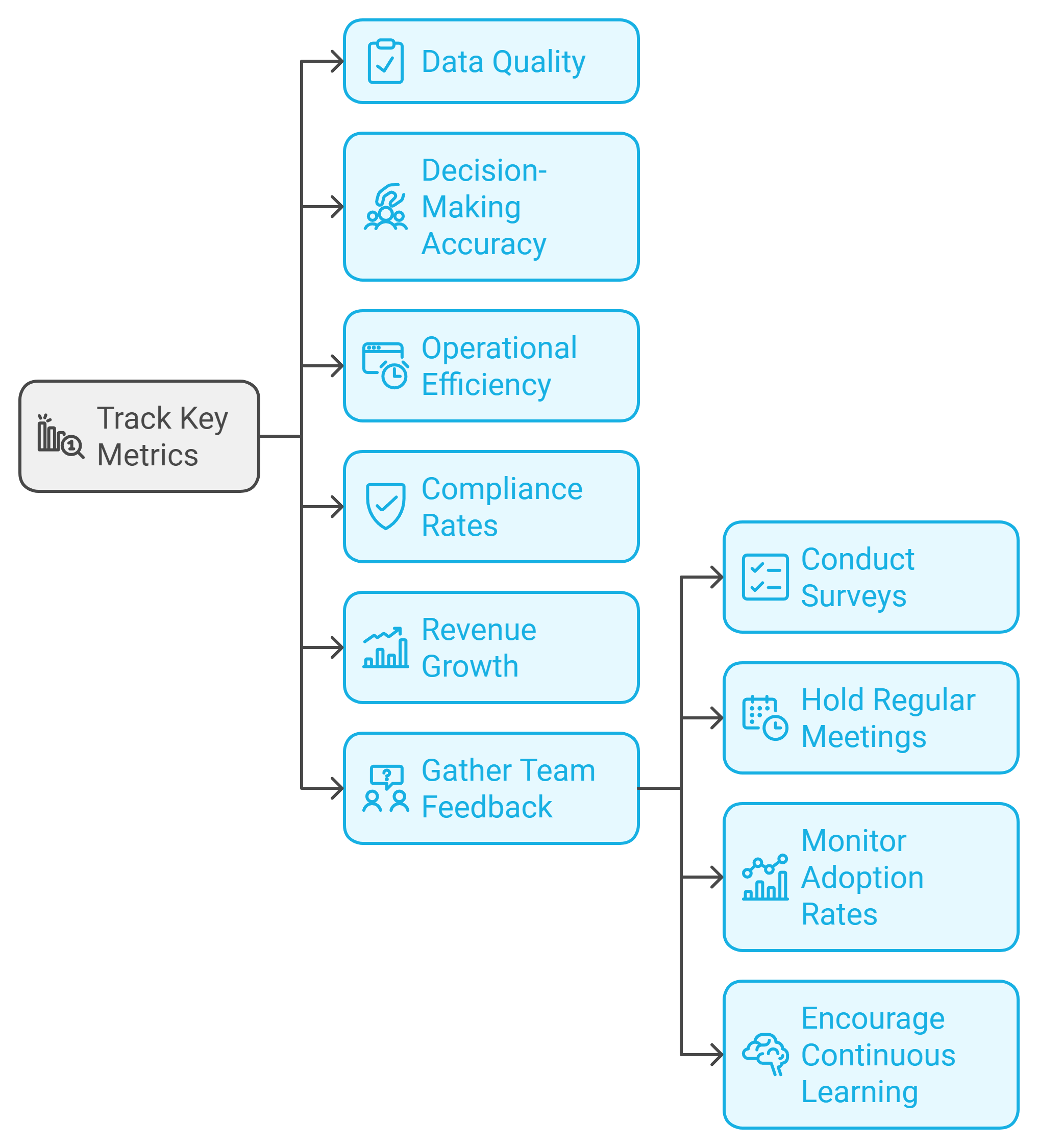
Key Metrics to Track
Tracking the right metrics helps you evaluate the effectiveness of your data governance efforts. These metrics provide a clear picture of how well your strategies align with your business goals. By monitoring them, you can identify areas for improvement and ensure your data governance plan delivers tangible results.
Data Quality
Measure the accuracy, completeness, and consistency of your data. High-quality data leads to better decision-making and fewer errors. For example, businesses that implement data governance often see improved data standards, which directly enhance operational efficiency.Decision-Making Accuracy
Evaluate how data governance impacts your decision-making process. Studies show that organizations practicing proper data governance experience a 20% increase in decision-making accuracy. This improvement translates into better resource allocation and strategic planning.Operational Efficiency
Assess how much time your team saves by accessing well-organized data. Efficient data management reduces wasted time and boosts productivity. Compare the time spent on data-related tasks before and after implementing governance practices.Compliance Rates
Monitor your adherence to data protection regulations like GDPR or CCPA. Strong compliance reduces the risk of legal penalties and builds trust with customers. A structured governance plan simplifies compliance, ensuring your business meets regulatory requirements.Revenue Growth
Analyze how data governance contributes to your bottom line. Improved data quality and faster decision-making often lead to increased revenue. Businesses that prioritize data governance frequently report higher performance and better results.
“Metrics act as a compass, guiding you toward continuous improvement in your data governance journey.”
By focusing on these key metrics, you can measure the success of your efforts and demonstrate the value of data governance to your team and stakeholders.
Gathering Feedback from Your Team
Your team plays a crucial role in the success of your data governance plan. Gathering their feedback ensures that your strategies remain practical and effective. Employees who interact with data daily can provide valuable insights into what works and what needs adjustment.
Conduct Surveys
Use surveys to collect input from your team. Ask questions about the usability of tools, clarity of processes, and overall satisfaction with the data governance framework. Their responses can highlight areas for improvement.Hold Regular Meetings
Schedule meetings to discuss data governance progress. Encourage team members to share their experiences and suggest solutions to challenges. Open communication fosters collaboration and ensures everyone feels involved in the process.Monitor Adoption Rates
Track how well your team adopts new tools and processes. Low adoption rates may indicate a need for additional training or simpler solutions. User-friendly tools and clear guidelines often improve adoption and engagement.Encourage Continuous Learning
Promote a culture of learning within your organization. Provide access to educational resources like webinars or online courses. A well-informed team is better equipped to handle data governance tasks effectively.
“Your team’s feedback is a powerful tool for refining your data governance plan and ensuring its long-term success.”
By actively involving your team, you create a collaborative environment that supports your data governance goals. Their insights help you adapt your strategies to meet the evolving needs of your business.
The Role of Data Governance in Business Growth
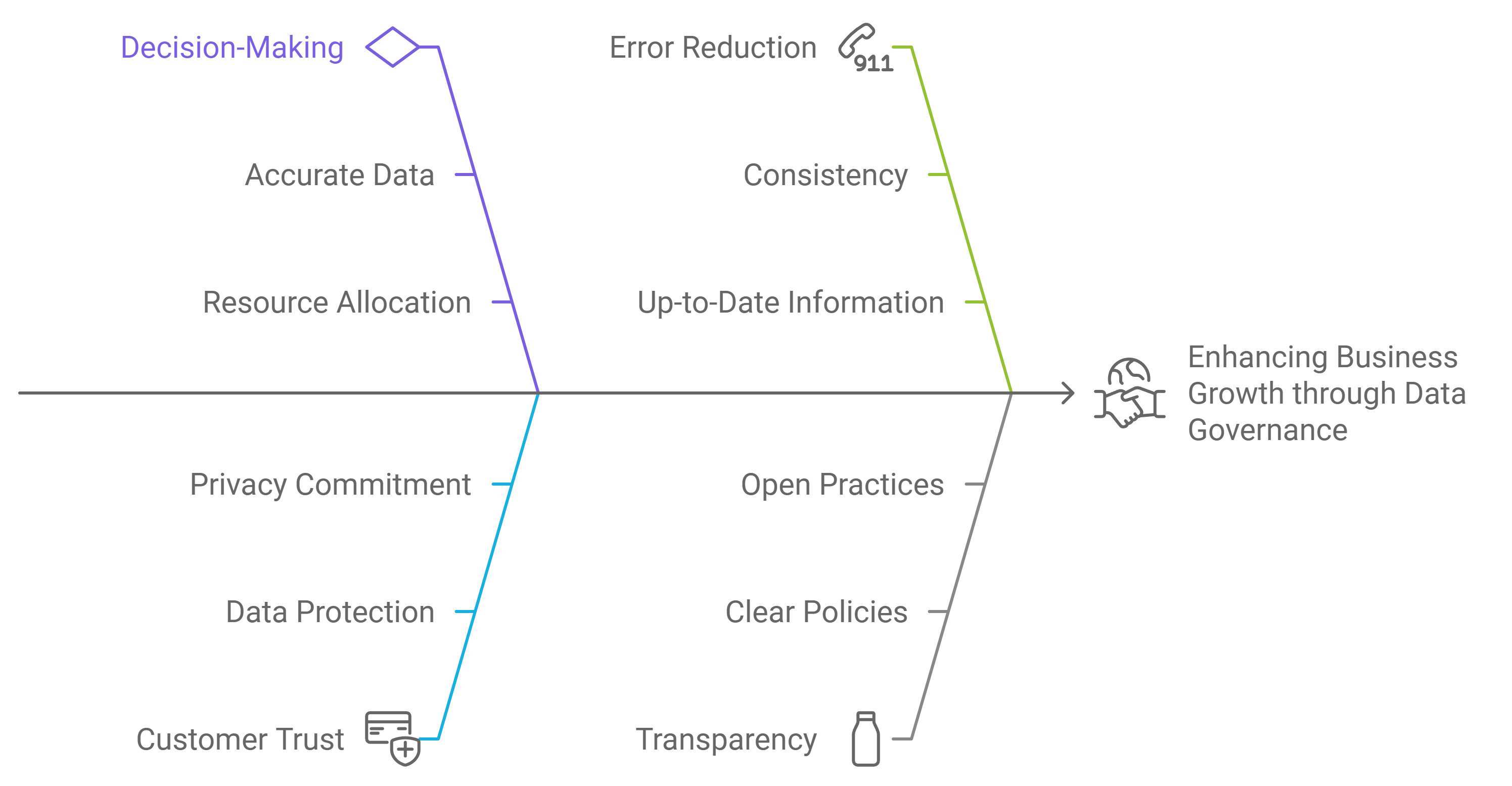
Supporting Better Decision-Making
Data governance equips you with accurate, consistent, and reliable data. This foundation allows you to make informed decisions that directly impact your business growth. When your data is well-organized and trustworthy, you can identify trends, predict customer behavior, and allocate resources effectively. For example, analyzing accurate sales data helps you determine which products perform best, enabling you to focus on strategies that maximize revenue.
“Trust is the currency of analytics. The impact will be severely limited if stakeholders don't trust the data or the analytics process.”
This insight highlights the importance of confidence in your data. Without it, even the most advanced analytics tools cannot deliver meaningful results. Data governance ensures that your data remains secure, high-quality, and up-to-date, fostering trust in the insights you derive. This trust empowers you to act decisively and stay ahead of competitors.
Additionally, data governance reduces the risk of errors in decision-making. Inconsistent or outdated data often leads to flawed conclusions, which can harm your business. By implementing governance practices, you minimize these risks and create a reliable framework for evaluating opportunities. This proactive approach positions your business to adapt quickly to market changes and seize growth opportunities.
Building Customer Trust and Loyalty
Your customers expect you to handle their data responsibly. Data governance demonstrates your commitment to protecting their information, which builds trust and strengthens relationships. When customers see that you prioritize their privacy, they are more likely to remain loyal to your brand. This loyalty translates into repeat business and positive word-of-mouth, both of which drive growth.
“Data governance is the key to building and maintaining trust. When there is confidence in the data's quality, security, and reliability, stakeholders are likelier to trust the insights generated through analytics.”
This principle applies not only to internal stakeholders but also to your customers. By safeguarding their data, you show that you value their trust. For instance, implementing encryption and access controls reassures customers that their personal information is secure. This assurance fosters a sense of reliability, encouraging them to continue doing business with you.
Moreover, data governance enhances transparency. Clear policies on how you collect, store, and use data help customers understand your practices. Transparency builds credibility, making customers feel more comfortable sharing their information. This openness creates a positive feedback loop, where trust leads to loyalty, and loyalty drives growth.
In today’s competitive market, trust is a powerful differentiator. Businesses that prioritize data governance not only protect their reputation but also create lasting connections with their customers. These connections form the foundation for sustainable growth and long-term success.
Data governance is a vital step for small businesses aiming to thrive in the digital age. It ensures your data remains accurate, secure, and reliable, empowering you to make informed decisions and build trust with customers. Starting small simplifies the process. Focus on manageable steps like organizing your data or assigning roles, then scale gradually as your business grows.
“Embracing data governance enhances protection, efficiency, and long-term resilience.”
Take the first step today. By managing your data effectively, you set the foundation for sustainable growth and position your business for long-term success.
See Also
Creating An Effective Data Governance Strategy In Steps
Aligning Data Governance With Your Business Goals
Eight Key Challenges In Data Governance And Solutions
